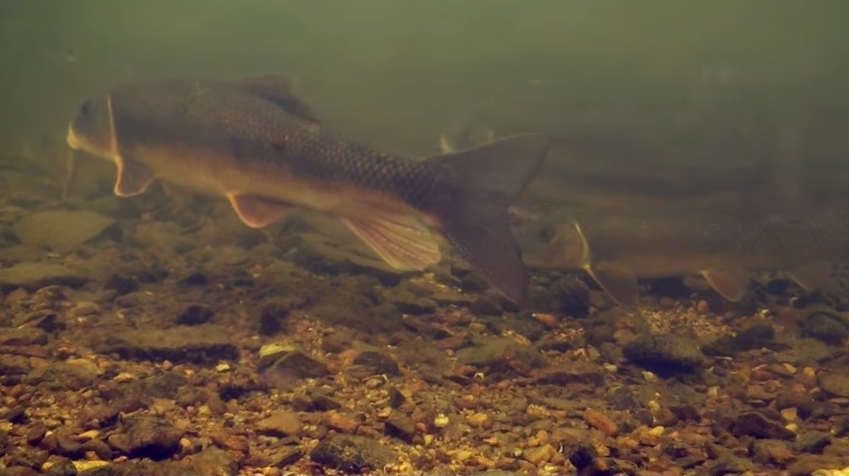Several years ago, I was on an early-season prospecting trip into the headwaters of the Rio Grande in south-central Colorado, on the prowl for migrating cutthroats. I found a great little meadow-stretch of water and carefully crept to the edge of the river—really just a small stream at this elevation. Peering carefully over the edge of a cutbank, I saw literally hundreds of fish finning over pea-sized gravel, and they weren’t little fish, either.
But they weren’t trout. They were Rio Grande suckers, and they were spawning.
I looked closely through polarized lenses and I could see, mingling with the spawning, thick-bodied suckers, a few chunky trout just lying in wait for sucker spawn to drift down to them. As Tim Flagler points out in the video above, sucker eggs are a great early-season source of food for trout, and they’ll often line up behind spawning fish and take advanage of the bounty. I furiously searched my fly boxes and found one, single, solitary yellow Glo-bug I remember finding snagged to a rootball a few years before. I tied the fly on my tippet, added a bit of weight, and drifted it carefully through the run.
Long story made short, I spent about two hours moving up and down along a 50-yard stretch of river, catching wild, native Rio Grande cutthroat trout at will. Finally, my tippet frayed enough to its breaking point. By then, I remember thinking, I’d had enough fun, thanks to the much-maligned sucker.
Tim’s pattern above would have likely worked just as well, if not better, because sucker eggs come in masses rather than as solitary eggs. It’s also a super-easy pattern to tie, and it’s timely. From the Rockies to the Northeast, suckers start spawning any minute now, and opportunistic trout will be lying in wait for their eggs … or your fly.
— Chris Hunt



